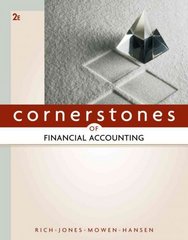need help with the s2p = / t = / the interval =

An article in Fortune magazine reported on the rapid rise of fees and expenses charged by mutual funds. Assuming that stock fund expenses and municipal bond fund expenses are each approximately normally distributed, suppose a random sample of 12 stock funds gives a mean annual expense of 1.65 percent with a standard deviation of 0.22 percent, and an independent random sample of 12 municipal bond funds gives a mean annual expense of 0.84 percent with a standard deviation of 0.20 percent. Let Hy be the mean annual expense for stock funds, and let uz be the mean annual expense for municipal bond funds. Do parts a, b, and c by using the equal variances procedure. (a) Set up the null and alternative hypotheses needed to attempt to establish that the mean annual expense for stock funds is larger than the mean annual expense for municipal bond funds. Test these hypotheses at the 0.05 level of significance. (Round your sp? answer to 4 decimal places and t-value to 2 decimal places.) Oversus Haul - 2 9.44 HO: 41 - 42 s2p Reject HO with a = 0.05 (b) Set up the null and alternative hypotheses needed to attempt to establish that the mean annual expense for stock funds exceeds the mean annual expense for municipal bond funds by more than 0.5 percent. Test these hypotheses at the 0.05 level of significance. (Round your t-value to 2 decimal places and other answers to 1 decimal place.) H0 1 - 12 0.5 versus Ha: 11-12 0.5 Reject HO with a = 0.05 (c) Calculate a 95 percent confidence interval for the difference between the mean annual expenses for stock funds and municipal bond funds. Can we be 95 percent confident that the mean annual expense for stock funds exceeds that for municipal bond funds by more than.5 percent? (Round your answers to 3 decimal places.) The interval=0 1 Yes 05 the interval is above An article in Fortune magazine reported on the rapid rise of fees and expenses charged by mutual funds. Assuming that stock fund expenses and municipal bond fund expenses are each approximately normally distributed, suppose a random sample of 12 stock funds gives a mean annual expense of 1.65 percent with a standard deviation of 0.22 percent, and an independent random sample of 12 municipal bond funds gives a mean annual expense of 0.84 percent with a standard deviation of 0.20 percent. Let Hy be the mean annual expense for stock funds, and let uz be the mean annual expense for municipal bond funds. Do parts a, b, and c by using the equal variances procedure. (a) Set up the null and alternative hypotheses needed to attempt to establish that the mean annual expense for stock funds is larger than the mean annual expense for municipal bond funds. Test these hypotheses at the 0.05 level of significance. (Round your sp? answer to 4 decimal places and t-value to 2 decimal places.) Oversus Haul - 2 9.44 HO: 41 - 42 s2p Reject HO with a = 0.05 (b) Set up the null and alternative hypotheses needed to attempt to establish that the mean annual expense for stock funds exceeds the mean annual expense for municipal bond funds by more than 0.5 percent. Test these hypotheses at the 0.05 level of significance. (Round your t-value to 2 decimal places and other answers to 1 decimal place.) H0 1 - 12 0.5 versus Ha: 11-12 0.5 Reject HO with a = 0.05 (c) Calculate a 95 percent confidence interval for the difference between the mean annual expenses for stock funds and municipal bond funds. Can we be 95 percent confident that the mean annual expense for stock funds exceeds that for municipal bond funds by more than.5 percent? (Round your answers to 3 decimal places.) The interval=0 1 Yes 05 the interval is above










